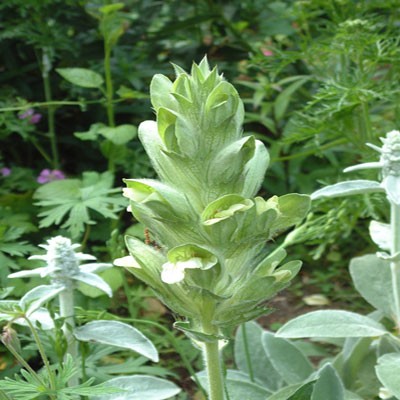Bear’s Breeches
Acanthus is the hardiest Genus in its family, coming mainly from the eastern Mediterranean coast across into Turkey, growing on dry rocky hills. Ideally, they prefer to grow in a well-drained site in a sunny position. Additionally, they will grow in light shade, but flower much better in the sun. They are easy, long lived architectural plants with deep coloured, glossy foliage of great merit. As a bonus, The bees just love the tall spikes set with hooded flowers stacked up in even columns. Each flower consists of a purple or pink hood above a contrasting white lip. The foliage, especially on the smaller species dies off completely with the frosts.
Roman and Greek homes commonly used Acanthus as decoration in , both as garlands and as motifs on friezes and on clothing. Virgil reports that Helen of Troy had Acanthus decoration on her clothing.
Architecture
The inspiration for the acanthus Leaf decoration used on the top of Corinthian columns is the lovely architectural leaves of this Genus. It is a stylised form and was probably based around the leaves of either A. mollis or A. spinosus.
This is the legend that tells of how the Romans first chose Acanthus leaves. The Greek architect, Callimachos, was visiting the tomb of a young woman who died on the eve of her wedding day. A previous visitor had left a basket covered by a tile standing on an Acanthus plant. Callimachos noticed that the tile had bent back a leaf in a particularly decorative shape. He then took this inspiration and used it on the columns of a Temple he was working on in Corinth. Vitruvius tells that it was the family’s maid who took the basket, containing the woman’s favourite goblets and that the tile was to shed the rain. The basket stood until the new growth twined around the basket in a most pleasing way.
Derivation
In the 17th century the name for Acanthus was Brank-ursine, or Bear’s claw – possibly in reference to the shape of the flowers.
The origin of the name Bear’s Breeches is a fancied resemblance of the softly hairy leaves and stalks (A. hirsutus ?) to the rump and legs of a hairy bear. I think this one takes some imagination !
Acanthus comes from the Greek ‘akanthe’ – a thorn
Links – Acanthus Compared , Botanical Style Photographs
-
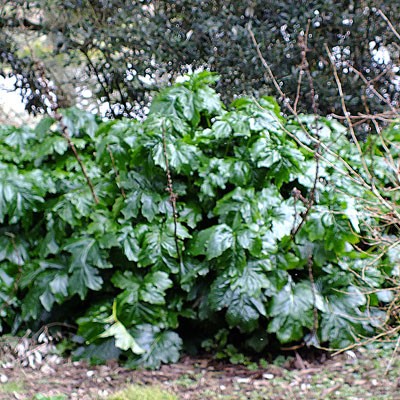
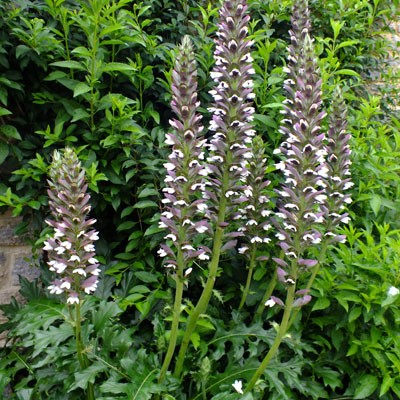
Potsize - 1L
Acanthus mollis . This is the classic Bear's Breeches that is so used in Classical decoration. Handsome deeply lobed leaves and stiff spikes densely packed with four rows of purple shrouded white flowers. This species is more open than its variety 'Latifolius' and paler in colour. Well drained soil in full sun; Height between 90 & 150cm Discount of 25p per plant for quantities of 3 or overLinks
Acanthus Compared
Botanical Style Photographs
-
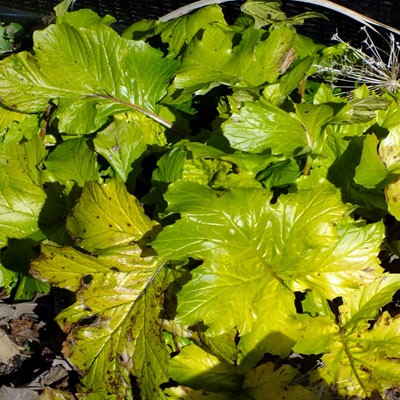
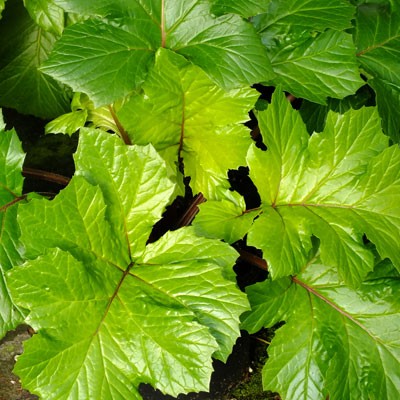
Potsize - 1L
A new form of Acanthus mollis with beautiful, bold broad shining golden foliage, particularly in Spring and Autumn, but also goldy in Summer if grown in the shade. Typical white slipper shaped flowers with strong purple hoods grow on 90cm tall stems, persisting for a long time from June to September. Perhaps not quite as hardy as the type but still good to -10 degrees especially if protected with a mulch, a course that is essential for the first Winter.Links
Acanthus Compared
Botanical Style Photographs
-
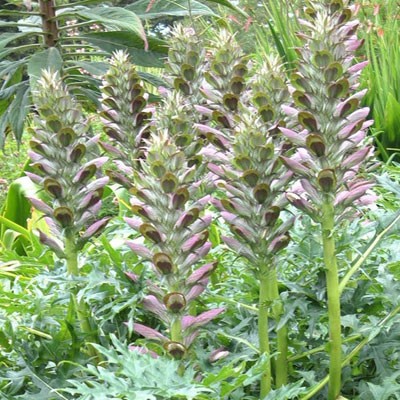
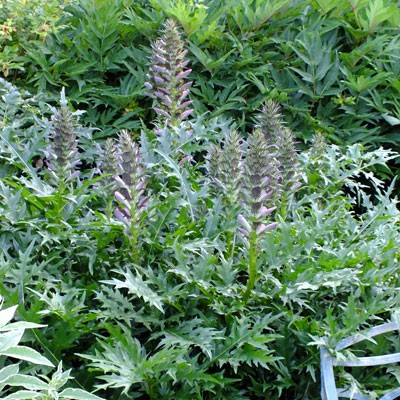
Potsize - 1L
(Acanthus caroli-alexandri) . Handsome plants with large shining ornamental foliage. This species has deeply divided glossy dark green leaves. Spires of hooded foxglove-like flowers in a two-toned purple and white. Height 4-5 feet. The foliage of Acanthus spinosus represents a midpoint between the less divided of Acanthus mollis and the extreme of spikiness, Acanthus spinosus Spinossissimus Group.Links
Acanthus Compared
Botanical Style Photographs
-
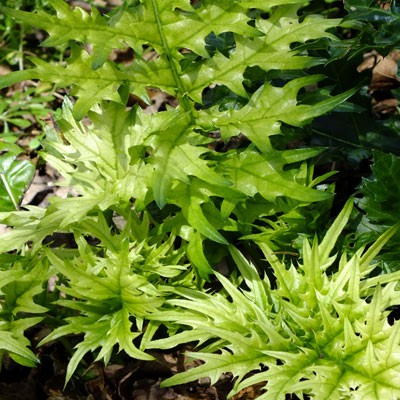
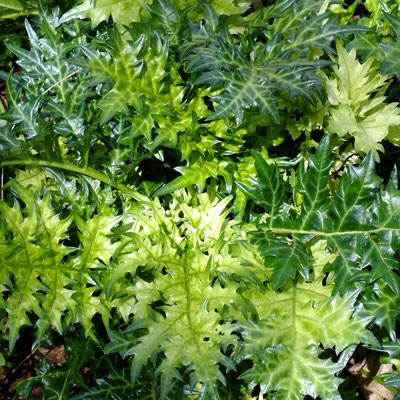
Potsize - 1L
Acanthus spinosus 'Lady Moore'. Handsome plants with large shining ornamental foliage. This species has deeply divided glossy dark green leaves, which in 'Lady Moore' are splashed and spotted cream in Spring when the plant is growing vigorously. Spires of hooded foxglove-like flowers. Height 4-5 feet. the cream variegation does not show up in potted plants.Links
Acanthus Compared
Botanical Style Photographs
-
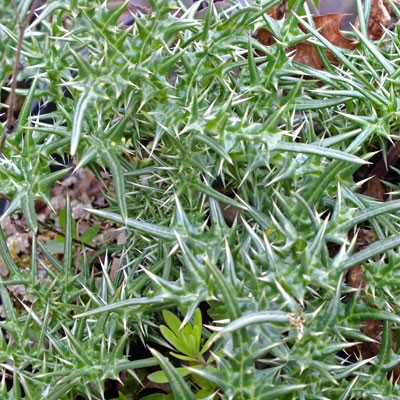
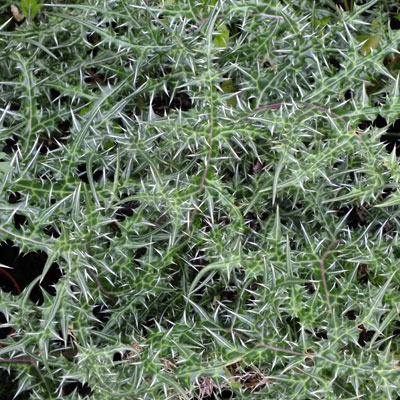
Potsize - 1L
The spiniest, prickliest form of Acanthus spinosus. The leaves are so finely cut that they are reduced to a veinal framework with every part of the leaf a handsome silver spike. It thrives in hot dry conditions although it flowers less precociously than the type. Still the foliage is amazing with its combination of dark green ground almost completely silvered over. It's ferocious mind - our neighbour grows it in his plant jail alongside his golden stinging nettle ! 75cmLinks
Acanthus Compared
Botanical Style Photographs

















































